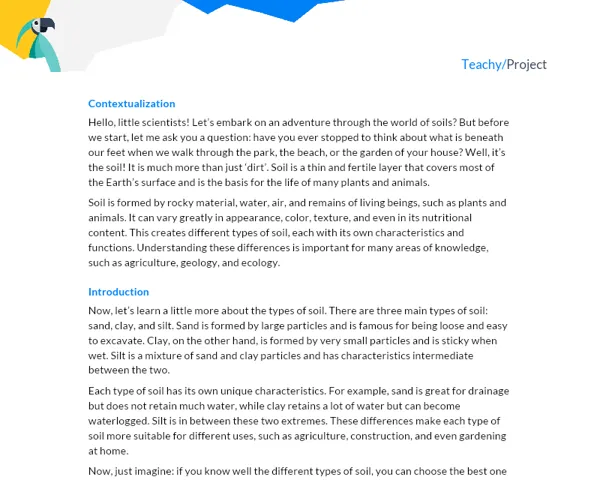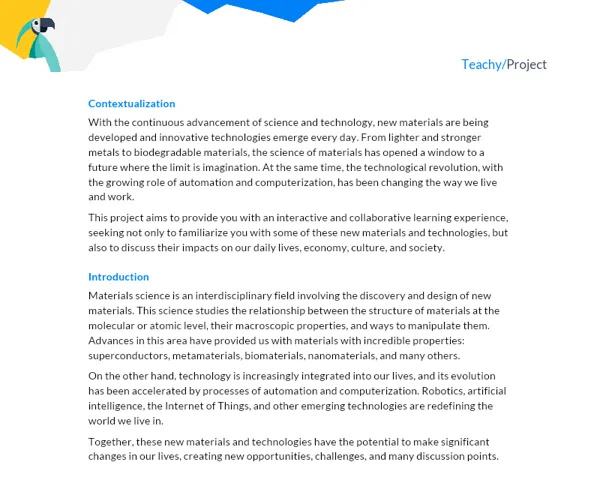Contextualization
Hello, young scientists! Have you ever stopped to think about how our homes are full of amazing things? We have tools that help us cook, clean, and perform many other tasks. But did you know that all these objects, despite being useful, can also pose dangers if not used correctly? This is what we call household accidents.
Household accidents are unexpected occurrences that happen in our homes and can cause injuries or damages. Statistics show that a large part of accidents happen inside our homes. Therefore, it is essential that we learn to identify the risks present in our household environment to prevent these accidents.
Introduction
To prevent household accidents, we first need to understand which objects or situations can pose a risk. So, let's start by talking about four main topics: sharp objects, flammable products, electricity, and cleaning products. Each of these items is very useful in our homes, but can be dangerous if not handled with care.
Sharp objects, such as knives and scissors, are indispensable tools in our routine. However, if not used correctly, they can cause cuts and serious injuries. Flammable products, like cooking gas, are essential for preparing our meals. Nevertheless, improper handling can result in fires.
When we talk about electricity, we are dealing with an invisible element, but one that is present in almost every room of the house. Despite being essential for light, heat, and appliance operation, electricity can be dangerous if not treated with respect and care. Lastly, we have cleaning products. They help us keep our homes clean and germ-free, however, many of them are toxic and can cause health problems if ingested or come into direct contact with the skin.
Now, let's embark on this journey of discovery together, using science and our powers of collaboration and creativity to find out how to make our homes safer. Are you ready? Let's go!
Practical Activity
Activity Title: "Safe Home: Understanding and Preventing Household Accidents"
Project Objective:
This project aims to help students identify the risks associated with sharp objects, flammable products, electricity, and cleaning products. The final product will be a presentation on household accidents and how to prevent them, which will be shared with the class.
Detailed Project Description:
Students, divided into groups, should research the four key topics (sharp objects, flammable products, electricity, and cleaning products) and how to prevent accidents related to them. The collected information should be used to create an interactive presentation that educates their classmates about preventing household accidents.
To encourage interdisciplinary learning, we will combine the Art discipline with the project: students will create household scenarios in cardboard boxes, representing dangerous situations and how to avoid them, using materials such as modeling clay, paper, and colored pencils.
Required Materials:
- Books and internet access for research
- Paper and pencils for notes
- Cardboard boxes
- Modeling clay
- Colored paper
- Colored pencils
Detailed Step-by-Step for Activity Execution:
- Divide students into groups of 3 to 5 members.
- Each group will receive one of the four topics for research: sharp objects, flammable products, electricity, or cleaning products.
- The groups should start by researching their topic, including the associated risks and how to prevent them. Students can use books and reliable websites for this research. Guide the students to take notes.
- After the research, each group should plan and create a presentation about their topic. The presentation should include information about the topic, the associated risks, and how to prevent them.
- Alongside the presentation, each group will build, using the cardboard box and other materials, a household scenario that presents dangerous situations and ways to avoid accidents related to the researched topic.
- During the scenario construction, encourage students to be creative, but always remember to represent the dangerous situations and prevention methods clearly and objectively.
- After completion, each group will present their scenario to the class and give an oral presentation based on their research.
- Finally, open up a space for questions and discussions after each presentation, encouraging everyone's participation.
The final product of the project will be the presentation of each group and the created scenario, providing a playful and interactive learning experience about preventing household accidents. In addition to acquiring theoretical knowledge on the subject, students will develop important skills such as time management, teamwork, effective communication, and creative thinking.


